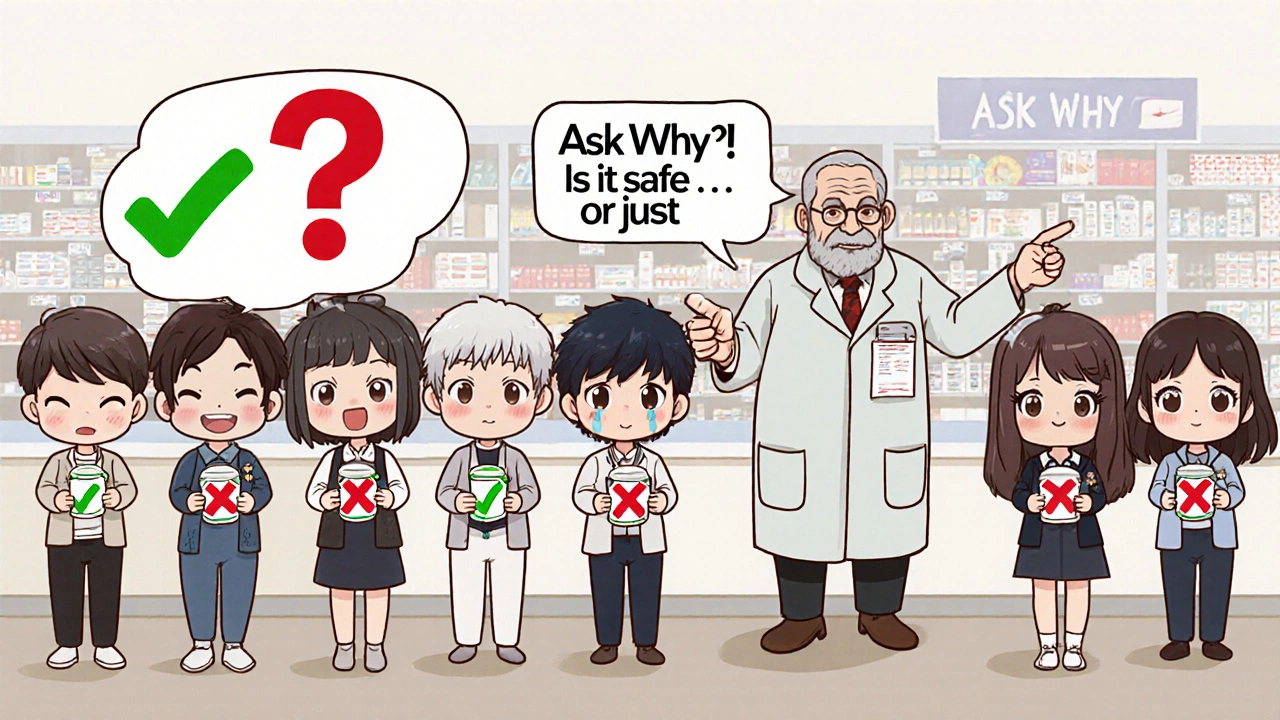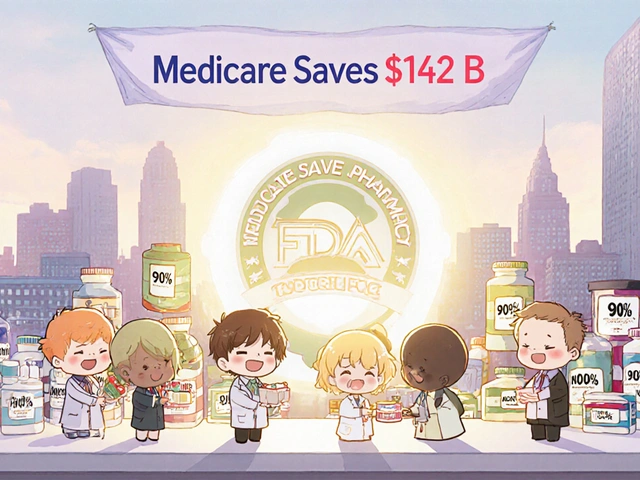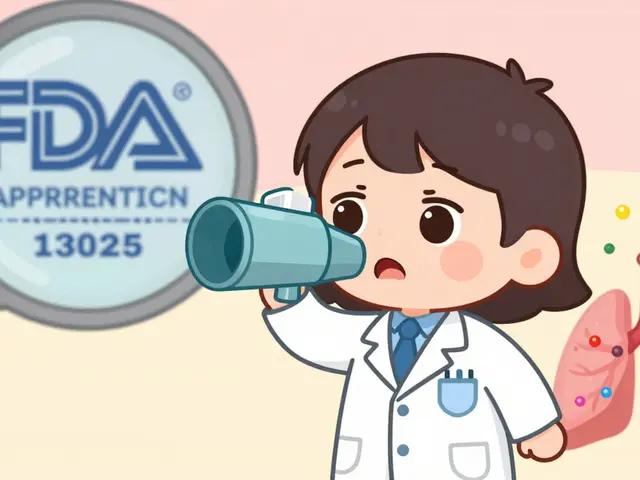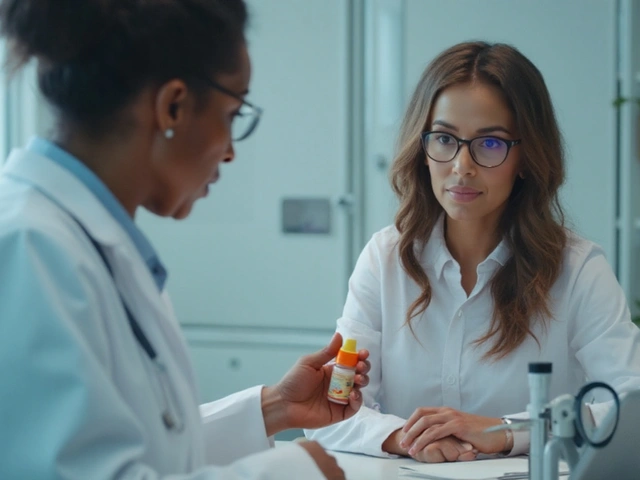When your pharmacist hands you a pill bottle and says, "This isn't what your doctor wrote," it’s not a mistake-it’s the law. A "Do Not Substitute" (DNS) prescription, also called "Dispense as Written" (DAW), means your doctor has legally blocked the pharmacist from swapping your brand-name drug for a cheaper generic version. It’s not about preference. It’s not about cost. Sometimes, it’s the only way to keep you safe.
Why Would a Doctor Block a Generic?
Most of the time, generics work just as well as brand-name drugs. The FDA requires them to have the same active ingredient, strength, and dosage form. But there are critical exceptions. For drugs with a narrow therapeutic index-like warfarin, levothyroxine, or phenytoin-even tiny differences in how the body absorbs the drug can cause serious harm. A 5% change in absorption might mean your blood doesn’t thin enough, or it thins too much. For someone on warfarin, that could mean a stroke or internal bleeding. The FDA says generics must be within 80-125% of the brand’s absorption rate. But for these high-risk drugs, the acceptable range shrinks to 90-112%. That’s a much tighter margin. And while most generics meet it, some patients still react differently. One study found that 5-7% of patients on levothyroxine experienced unstable thyroid levels after switching to a generic. That’s why doctors who treat thyroid disease often write "Do Not Substitute" on those prescriptions.It’s Not Just About the Drug-It’s About the Delivery
Some drugs aren’t just pills. They’re inhalers, auto-injectors, or prefilled syringes. Even if the active ingredient is identical, changing the delivery device can change how the drug works. For example, some asthma inhalers have different propellants or nozzle designs. A generic version might not deliver the same dose to your lungs. Forty-three states ban substitution for these kinds of products, even if the chemical is the same. Biologics-complex drugs made from living cells-are another big category. These include drugs for rheumatoid arthritis, Crohn’s disease, and cancer. Unlike small-molecule generics, biologics don’t have simple copies. They have "biosimilars," and only 12 of them have been approved as "interchangeable" by the FDA as of late 2023. That means pharmacists can’t swap them unless the doctor says it’s okay. Most doctors still write DNS on biologic prescriptions because the data on switching isn’t strong enough yet.What Does a "Do Not Substitute" Prescription Look Like?
It’s not just a note. It’s a legal requirement. In most states, the doctor must write one of these phrases on the prescription: "Do Not Substitute," "Dispense as Written," or "DAW." Some states, like New York, require the doctor to add their initials next to it. California lets doctors check a box in the electronic system, but they still have to log in and authenticate it. If the notation is missing or unclear, the pharmacist can legally substitute the generic. Electronic prescriptions now use codes-DAW 0 through DAW 9-to signal substitution rules. DAW 1 means "Dispense as Written," which is what you want if your doctor says no substitution. But here’s the problem: insurance systems often glitch. A 2022 survey found that 73% of pharmacists had insurance claims rejected because the system didn’t recognize the DNS code. That means you might wait 20 minutes while they call the doctor’s office to fix it.How Much More Does It Cost?
A brand-name drug can cost 200-300% more than its generic. On average, a DNS prescription costs $487. A generic version of the same drug? Around $144. That’s a $343 difference per fill. Multiply that by millions of prescriptions, and you’re looking at $15.7 billion in avoidable spending each year, according to the American College of Physicians. But cost isn’t always the deciding factor. For patients with Medicare Part D, DNS prescriptions are 12.7% more common than for those with private insurance. Why? Because Medicare doesn’t always cover the full cost of generics, and some patients have high out-of-pocket costs for brand drugs. In those cases, doctors might write DNS not because the drug is safer, but because the patient can’t afford the generic’s copay-or because the generic isn’t on the plan’s formulary.When Is It Really Necessary? When Is It Not?
The data shows that only 8-12% of all prescriptions carry a DNS designation. But in some clinics, it’s as high as 30%. Experts warn that’s too much. Dr. Aaron Kesselheim from Harvard says many DNS requests come from drug reps or outdated habits-not real clinical need. For example, antibiotics, blood pressure meds, or cholesterol drugs almost never need to be brand-only. Generics for these have been used safely for decades. The real red flags for DNS are:- Drugs with a narrow therapeutic index (warfarin, levothyroxine, digoxin, phenytoin)
- Patients who had a bad reaction to a generic before
- Complex delivery systems (inhalers, injectables, patches)
- Biologics without FDA interchangeable status

What If You Don’t Know You’re Paying More?
A Kaiser Family Foundation survey found that 68% of patients didn’t realize their prescription was brand-only until they got to the pharmacy counter. One person on Reddit said their Synthroid cost $85 instead of $10-and they had no idea why. That’s a problem. You have a right to know. If your prescription says "Do Not Substitute," ask your doctor: "Is this because of safety, or just habit?" Ask your pharmacist: "Is there a generic version that’s FDA-approved for this?" And check your insurance plan’s formulary. Sometimes, the brand isn’t even covered-and you’re stuck paying full price.What’s Changing?
In 2023, 18 states introduced new laws to limit DNS use to only medically justified cases. Seven states now require prior authorization before a DNS prescription can be filled. That means your doctor might need to submit extra paperwork to prove the brand is necessary. The FDA is also investing $50 million over the next five years to study bioequivalence in narrow therapeutic index drugs. If they find ways to make generics even more precise, we might see fewer DNS prescriptions in the future-for drugs like levothyroxine, at least. Meanwhile, electronic health records are slowly getting better. Epic Systems, one of the biggest EHR platforms, found that 32% of DNS orders needed manual fixes because the system defaulted to generics. That’s changing. More doctors are training to use the right codes and documentation.What Should You Do?
If you’re on a brand-name drug and you’re not sure why:- Ask your doctor: "Is this because of safety, or just because it’s the brand?"
- Ask your pharmacist: "Is there a generic version that’s approved for this?"
- Check your insurance plan’s list of covered drugs.
- If you’ve had side effects from a generic before, tell your doctor. Document it.
- If you’re paying more than $100 a month for a drug that’s been generic for years, question it.
Most of the time, generics are fine. But when they’re not-when your life depends on that exact dose-that’s when "Do Not Substitute" becomes more than a phrase. It becomes a lifeline.
What does "Do Not Substitute" mean on a prescription?
"Do Not Substitute" (DNS) means the prescriber has legally instructed the pharmacist to dispense the exact brand-name drug written on the prescription and not to replace it with a generic version, even if one is available. This is also called "Dispense as Written" (DAW). It’s a clinical decision, not a pharmacy rule.
Can a pharmacist override a "Do Not Substitute" order?
No. Pharmacists are legally required to follow DNS instructions. If they substitute a generic without permission, they risk losing their license. The only exception is if the DNS notation is missing, unclear, or not properly signed-then the pharmacist can legally dispense the generic.
Why are some drugs not allowed to be substituted even if they have generics?
Some drugs, especially those with a narrow therapeutic index (like warfarin or levothyroxine), require extremely precise dosing. Even small differences in how a generic is absorbed can cause dangerous side effects. Also, complex delivery systems-like inhalers or auto-injectors-can’t be swapped because the device affects how the drug works, even if the chemical is the same.
How much more expensive are brand-name drugs than generics?
On average, brand-name drugs cost about 237% more than their generic equivalents. For example, a brand prescription might cost $487, while the generic version costs $144. This adds up to over $15 billion in unnecessary spending each year when DNS is used inappropriately.
Can I ask my doctor to change a "Do Not Substitute" prescription?
Yes. If you’re paying more and don’t know why, ask your doctor: "Is this necessary for my safety, or is it just the brand?" If your drug is something like metformin or lisinopril, there’s usually no medical reason to avoid the generic. Your doctor can update the prescription if needed.
Are biosimilars the same as generics?
No. Biosimilars are copies of complex biologic drugs made from living cells, not simple chemicals. Unlike generics, they aren’t automatically interchangeable. Only 12 biosimilars have been approved as "interchangeable" by the FDA as of 2023. Most doctors still write "Do Not Substitute" for biologics because switching isn’t guaranteed to be safe.
Why do insurance companies sometimes reject DNS prescriptions?
Insurance systems often don’t recognize the correct DAW codes or misread electronic prescriptions. This causes delays. Pharmacists report that 15-20% of DNS prescriptions get rejected at first, requiring calls to the doctor’s office to fix the code or provide documentation.
Is "Do Not Substitute" used too often?
Yes, in some cases. While 8-12% of prescriptions have DNS orders, some clinics report rates as high as 30%. Experts say that’s often due to outdated habits, drug company influence, or lack of awareness-not real clinical need. For most common drugs, generics are just as safe and effective.







Anne Nylander
November 22, 2025 AT 01:12OMG I had no idea my Synthroid was brand-only and costing me $85!! I thought it was just how it was. My pharmacist finally told me last month and I cried. I asked my doc and they said yes, it's because my body reacts weird to generics. So I'm keeping it, but I'm so glad I asked!!
Donald Frantz
November 22, 2025 AT 03:44The FDA's 80-125% bioequivalence range is a joke for narrow therapeutic index drugs. That's not science-it's a loophole. A 25% swing in absorption is not acceptable for warfarin or levothyroxine. The system is designed to save money, not lives. And now they want to expand biosimilar substitution? That's reckless.
Sammy Williams
November 23, 2025 AT 09:32My uncle’s on phenytoin and switched to generic once-had a seizure in the grocery store. Never again. Docs don’t write DNS out of habit, they write it because they’ve seen what happens when you do. Don’t second-guess your doctor unless you’ve lived it.
Julia Strothers
November 23, 2025 AT 20:01Big Pharma owns the FDA. They pay doctors to write DNS so they can keep charging $500 for pills that cost 3 cents to make. They don’t care if you go broke. They care about quarterly profits. The ‘narrow therapeutic index’ excuse? A distraction. They’ve been doing this since the 90s. Wake up.
Erika Sta. Maria
November 24, 2025 AT 04:20Why do we even have brands? In India, generics work fine for everything-even for epilepsy patients. Maybe Western medicine is too obsessed with control. Maybe it's not the drug-it's the mindset. We are too afraid of change. The body adapts. It always does.
Nikhil Purohit
November 25, 2025 AT 01:46Actually, in India, we’ve had decades of generic use with no issues for most drugs. But for warfarin? Even here, docs avoid substitution. The science isn’t wrong-it’s context-dependent. For 90% of drugs, generics are fine. For 5-10%, they’re not. The problem is overuse, not underuse. Know the difference.
Debanjan Banerjee
November 25, 2025 AT 22:35Let’s cut through the noise. The 5-7% failure rate with levothyroxine generics is real and documented in JAMA and The Lancet. This isn’t anecdotal. It’s statistical. If you’re on levothyroxine and your TSH fluctuates after switching, that’s not ‘in your head’-it’s pharmacokinetics. Stop romanticizing generics. They’re not magic. They’re chemistry. And chemistry isn’t always forgiving.
Steve Harris
November 27, 2025 AT 02:09I appreciate both sides here. I’ve had patients who needed the brand, and I’ve had others who were paying $400/month for a drug that’s been generic for 15 years. The key is intentionality. If your doctor writes DNS without explaining why, ask. If they can’t explain, it’s worth a second opinion. Safety matters-but so does financial sanity. Balance is everything.
Michael Marrale
November 27, 2025 AT 03:32Did you know the FDA’s testing labs are owned by the same companies that make the drugs? Yeah. They test themselves. No independent audits. That’s why the 80-125% range exists-it’s not science, it’s corporate lobbying. Your ‘safe’ generic? Maybe it’s not. Maybe your blood thinning meds are just… not working. And no one will tell you.
David vaughan
November 29, 2025 AT 01:35I’ve been on warfarin for 12 years. Switched to generic once. INR went from 2.4 to 3.9 in two weeks. Almost bled out. Back to brand. Never again. I don’t care if it’s $500. I care that I’m alive. This isn’t about money. It’s about not dying because someone thought ‘close enough’ was good enough.
David Cusack
November 30, 2025 AT 05:56One must question the epistemological foundations of bioequivalence. The very notion that a molecule, isolated from its proprietary manufacturing context, retains identical pharmacodynamic properties, is a reductionist fallacy. The pharmaceutical industrial complex thrives on this illusion. The FDA, as a regulatory body, has been captured by neoliberal logics. One must ask: Who benefits from the myth of interchangeability?
Elaina Cronin
December 1, 2025 AT 06:20As a nurse practitioner with over 20 years of clinical experience, I have witnessed firsthand the devastating consequences of inappropriate generic substitution in patients with narrow therapeutic index conditions. The data is clear, the risks are measurable, and the ethical imperative is undeniable. To dismiss DNS as ‘habit’ is not only medically irresponsible-it is a betrayal of patient trust. We must prioritize safety over cost-cutting, always.
Willie Doherty
December 1, 2025 AT 18:46There’s a systemic failure here. Pharmacists are trained to substitute. Doctors are overworked and don’t always document DNS properly. Insurance systems are outdated. Patients are confused. The problem isn’t the drug-it’s the infrastructure. Fix the EHRs. Train the pharmacists. Educate the public. Don’t blame the doctors. Don’t blame the generics. Fix the system.